





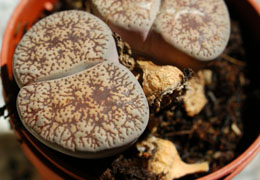 Lithops, the Living Stone
Lithops, the Living Stone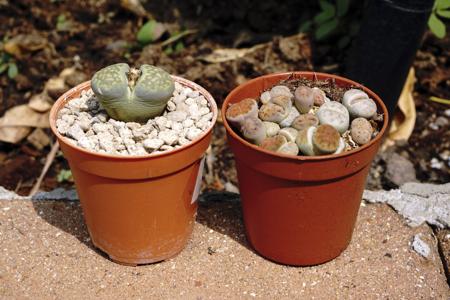 Whether you're looking for an interesting new houseplant or a sustainable, low-maintenance plant for decorative landscaping, the lithops plant makes an interesting choice. Lithops is a type of succulent, like cactus or ice plant. Unlike ice plants, lithops are not ground cover plants. Their thick, rubbery leaves grow in pairs that look like two rocks or stones sitting next to each other. The rock-like appearance is what gives lithops its name - lith is a prefix that means 'stone'. A common nickname for the plant is 'living stones'. It is thought that the unique leaf structure helps to channel light downward into the roots; since the leaves are slightly translucent, light can travel through them to reach the underground portions of the plant.Growing Lithops
Whether you're looking for an interesting new houseplant or a sustainable, low-maintenance plant for decorative landscaping, the lithops plant makes an interesting choice. Lithops is a type of succulent, like cactus or ice plant. Unlike ice plants, lithops are not ground cover plants. Their thick, rubbery leaves grow in pairs that look like two rocks or stones sitting next to each other. The rock-like appearance is what gives lithops its name - lith is a prefix that means 'stone'. A common nickname for the plant is 'living stones'. It is thought that the unique leaf structure helps to channel light downward into the roots; since the leaves are slightly translucent, light can travel through them to reach the underground portions of the plant.Growing Lithops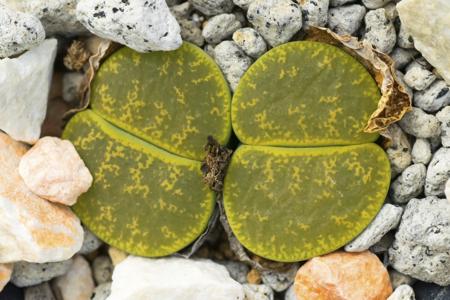 Lithops plants are native to the sunny, warm climates of Southern Africa, and they were first recorded in the early 1800s by W. J. Burchell. Today, lithops can be found all over the world in decorative settings and botanical gardens. These hearty plants can be a long-lasting choice for indoor or outdoor decoration - if cared for properly, they can live up to 20 years. Their heartiness makes them a good choice for use in xeriscaping, a style of landscaping that does not require watering or heavy maintenance. In fact, growers should avoid watering lithops very often, and should not water them at all in the winter.Benefits of Landscaping with Lithops
Lithops plants are native to the sunny, warm climates of Southern Africa, and they were first recorded in the early 1800s by W. J. Burchell. Today, lithops can be found all over the world in decorative settings and botanical gardens. These hearty plants can be a long-lasting choice for indoor or outdoor decoration - if cared for properly, they can live up to 20 years. Their heartiness makes them a good choice for use in xeriscaping, a style of landscaping that does not require watering or heavy maintenance. In fact, growers should avoid watering lithops very often, and should not water them at all in the winter.Benefits of Landscaping with Lithops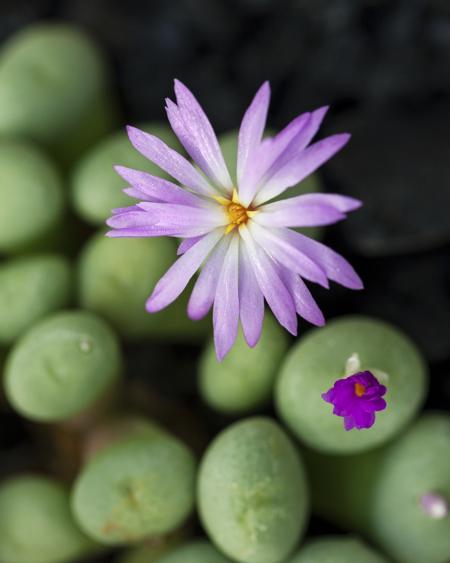 Because lithops look so much like small stones, they can blend in very well with their surroundings if they are planted among rocks or gravel. This camouflage technique protects them from being eaten by animals, which adds to their longevity and reduces the amount of maintenance they require. Don't be fooled into thinking that lithops aren't interesting to look at. Their intricate surface patterns and the flowers they produce once a year make them visually delightful, indoors or out. In fact, if they are cared for, they can become even more interesting to look at as houseplants than they are in the wild. That's because, in the wild, old leaves usually die and fall off as new leaf pairs emerge. With a little attention, however, the old leaf pairs can survive alongside the new leaves, creating an even more fascinating stony look.Lithops Collectors
Because lithops look so much like small stones, they can blend in very well with their surroundings if they are planted among rocks or gravel. This camouflage technique protects them from being eaten by animals, which adds to their longevity and reduces the amount of maintenance they require. Don't be fooled into thinking that lithops aren't interesting to look at. Their intricate surface patterns and the flowers they produce once a year make them visually delightful, indoors or out. In fact, if they are cared for, they can become even more interesting to look at as houseplants than they are in the wild. That's because, in the wild, old leaves usually die and fall off as new leaf pairs emerge. With a little attention, however, the old leaf pairs can survive alongside the new leaves, creating an even more fascinating stony look.Lithops Collectors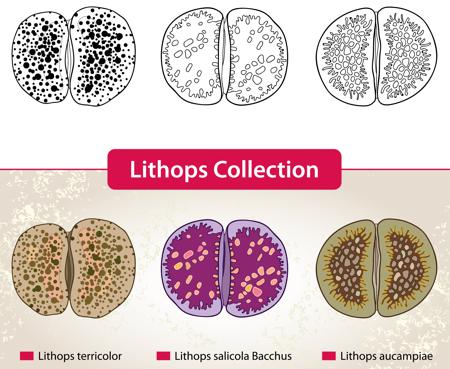 Lithops plants are a great choice for anyone who wants to spice up their décor or landscaping, since they don't require much attention. However, they are also a popular selection among succulent aficionados and collectors. Lithops collectors trade particularly interesting plants and share tips for growing them. Collectors also catalog the different varieties of lithops, which number in the hundreds. Even if you don't become a lithops hobbyist, tracking down a few different lithops species could help create a beautiful and unique array of these unusual plants.Tips for Decorating with LithopsSince lithops and other succulents are related to cactus, they should be watered only rarely. Their thick, rubbery leaves act as water storage, so over watering them can cause damage. If planted outdoors, lithops plants do best in warm, sunny locations with dry climates. That's why they're so good for xeriscaping, which is an important technique in arid regions. In cooler and more humid locations, lithops are probably better off indoors, where they can serve as an accent to any room. Southwest-themed rooms are an obvious choice for these plants, but they would also be right at home among modern décor, and with the right pot they could be made to look quite futuristic. With the strange and beautiful lithops, the possibilities are endless!
Lithops plants are a great choice for anyone who wants to spice up their décor or landscaping, since they don't require much attention. However, they are also a popular selection among succulent aficionados and collectors. Lithops collectors trade particularly interesting plants and share tips for growing them. Collectors also catalog the different varieties of lithops, which number in the hundreds. Even if you don't become a lithops hobbyist, tracking down a few different lithops species could help create a beautiful and unique array of these unusual plants.Tips for Decorating with LithopsSince lithops and other succulents are related to cactus, they should be watered only rarely. Their thick, rubbery leaves act as water storage, so over watering them can cause damage. If planted outdoors, lithops plants do best in warm, sunny locations with dry climates. That's why they're so good for xeriscaping, which is an important technique in arid regions. In cooler and more humid locations, lithops are probably better off indoors, where they can serve as an accent to any room. Southwest-themed rooms are an obvious choice for these plants, but they would also be right at home among modern décor, and with the right pot they could be made to look quite futuristic. With the strange and beautiful lithops, the possibilities are endless!
Copyright © www.100flowers.win Botanic Garden All Rights Reserved